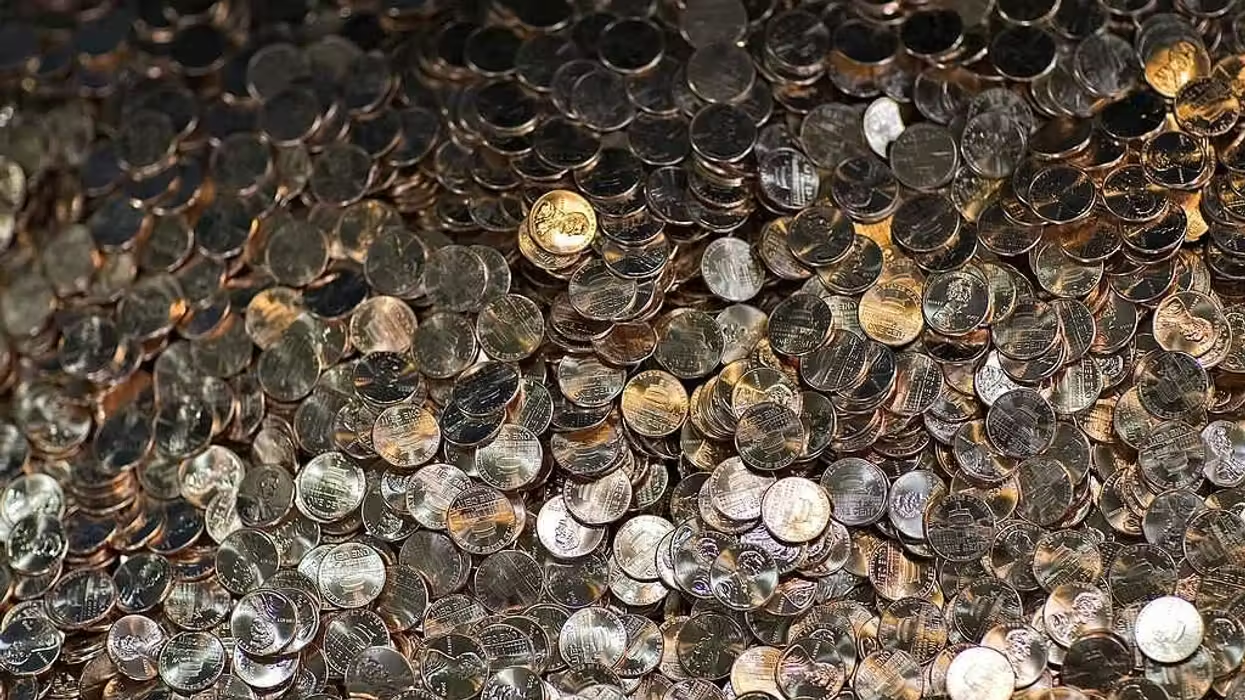
© 2025 Blaze Media LLC. All rights reserved.
"I think of SAM as a nose."
LOS ANGELES (TheBlaze/AP) -- NASA teased an upcoming announcement a couple weeks ago saying it would be one to put in the history books, but only a week later it started downplaying whatever the rover on Mars found. Now, the results are in.
The first test of Martian soil by the rover Curiosity has found no definitive evidence that the red planet has the chemical ingredients to support life. Scientists said Monday a scoop of sandy soil analyzed by the rover's chemistry lab contained water and a mix of chemicals, but not the complex carbon-based compounds considered necessary for microbial life.
 Here's a look at scoop marks taken by Curiosity. (Image: NASA/JPL-Caltech/MSSS)
Here's a look at scoop marks taken by Curiosity. (Image: NASA/JPL-Caltech/MSSS)
The latest findings reported at a meeting of the American Geophysical Union meeting in San Francisco came from an instrument aboard the six-wheel rover that baked the soil and analyzed the gases released.
"This is the first time we've analyzed a solid sample using all three instruments that comprise SAM," Paul Mahaffy, SAM Principal Investigator at NASA Goddard, said in a statement. "We also cleaned Curiosity's sample manipulation system and successfully tested our ability to move the sample from the manipulation system through the instrument suite."
Watch this video to learn more about what SAM does:
Investigator Florence Tan said in the video, "I think of SAM as a nose. It can sniff out different Martian components, air as well as soil samples, to really, really tease out the secrets of Mars."
Curiosity landed in Gale Crater near the Martian equator in August on a two-year mission to study whether the environment on Mars could have been favorable for life.
 Here's where Curiosity has been from August through November. (Image: NASA/JPL-Caltech/Univ. of Arizona)
Here's where Curiosity has been from August through November. (Image: NASA/JPL-Caltech/Univ. of Arizona)
The dirt at Curiosity's landing site appeared similar to that found in regions visited by other Mars spacecraft, scientists said. It contained water, sulfur and possibly perchlorate, a compound made up of oxygen and chlorine. NASA's Phoenix lander, which touched down near the Martian arctic, previously found perchlorate in the soil.
The rover did find a simple carbon compound, but scientists have yet to determine whether it's native to the red planet, or came from elsewhere.
Scientists think the best chance of finding complex carbon is at Mount Sharp, a 3-mile-high mountain rising from the crater floor. Curiosity won't trek there until early next year.
A comment two weeks ago by the mission's chief scientist led to speculation that Curiosity had made a major discovery that would be announced Monday. But NASA last week said that wasn't the case.
The rover is the most sophisticated spacecraft sent to Mars. The rover Opportunity has been exploring craters in Mars' southern hemisphere since 2004. Opportunity's twin, Spirit, fell silent in 2010 after getting stuck in a sand trap.
Related:
Want to leave a tip?
We answer to you. Help keep our content free of advertisers and big tech censorship by leaving a tip today.
Want to join the conversation?
Already a subscriber?
more stories
Sign up for the Blaze newsletter
By signing up, you agree to our Privacy Policy and Terms of Use, and agree to receive content that may sometimes include advertisements. You may opt out at any time.
Related Content
© 2025 Blaze Media LLC. All rights reserved.
Get the stories that matter most delivered directly to your inbox.
By signing up, you agree to our Privacy Policy and Terms of Use, and agree to receive content that may sometimes include advertisements. You may opt out at any time.





